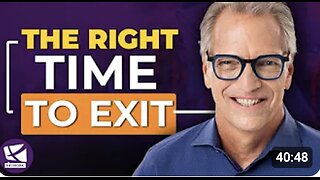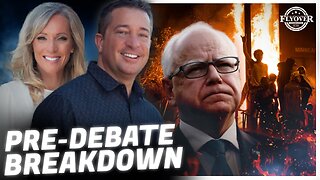How to Profit from a Weakening Dollar
In this episode of Rich Dad's Stockcast, host Del Denney teams up with financial expert Andy Tanner to tackle a fascinating topic: how to short the U.S. dollar. With growing concerns about the future value of the dollar, this episode provides a clear and actionable guide on how to profit from a weakening currency, making it essential viewing for anyone looking to sharpen their financial skills.
FREE Training with Andy Tanner: https://bit.ly/3JsRdmj
What Does It Mean to Short the Dollar?
For those unfamiliar with the concept, shorting the dollar means taking a financial position that profits if the value of the dollar declines. Andy Tanner simplifies this strategy into a practical, four-step process that anyone—from beginners to seasoned investors—can follow.
The Four Steps to Shorting the Dollar:
1. Borrowing: The first step involves borrowing an asset expected to lose value, like the U.S. dollar.
2. Exchanging: Trade the borrowed dollars for an asset that is likely to hold or increase its value, such as real estate.
3. Converting Back: Generate income from the asset (like rental income from property) and convert it into cash flow.
4. Returning: Pay back the borrowed dollars with currency that has decreased in value, maximizing your profit.
Real-World Application in Real Estate
A real-world example of shorting the dollar is through real estate investing. By borrowing money to purchase rental properties, you're effectively betting against the dollar. As inflation rises and the dollar weakens, the relative cost of your debt decreases while property values and rental income typically increase. This creates a powerful wealth-building opportunity.
Andy Tanner’s Insight:
“You can either buy assets that go up in value or borrow liabilities that go down in value. Either way, your net worth grows.”
Risk Management
While shorting the dollar can be lucrative, it’s not without risks. Andy and Del emphasize the importance of managing your risks through financial education, balancing assets, liabilities, and cash flow to ensure long-term success.
-----
Disclaimer: The information provided in this video is for educational and informational purposes only. It should not be considered as financial advice or a recommendation to buy or sell any financial instrument or engage in any financial activity.
The content presented here is based on the speaker's personal opinions and research, which may not always be accurate or up-to-date. Financial markets and investments carry inherent risks, and individuals should conduct their own research and seek professional advice before making any financial decisions.
-
 40:47
40:47
The Rich Dad Channel
11 days agoThe evolution of a business and when to recognize it is time to exit - Tom Wheelwright
3.57K2 -
 DVR
DVR
Fresh and Fit
7 minutes agoJD Vance VS Tim Walz! Vice President Debate 2024
62.8K40 -

Benny Johnson
4 hours ago🚨 DEBATE-MAGEDDON: Kamala In PANIC Ahead of Trump Debate, Dems Admit DEFEAT!? Lara Trump Joins LIVE
174K629 -
 3:03:36
3:03:36
Laura Loomer
4 hours agoEP79: LIVE VP DEBATE COVERAGE: JD VANCE VS TIM WALZ
49.4K32 -
 1:35:19
1:35:19
Glenn Greenwald
6 hours agoIran's Missile Retaliation Against Israel: What Does It Mean For The U.S. & The Region? Plus: VP Debate Reaction On Locals | SYSTEM UPDATE #344
167K149 -

Fresh and Fit
7 hours agoIran Launches Massive Missile Attack On Israel
150K35 -
 DVR
DVR
WeAreChange
5 hours agoLIVE W/ Alex Jones & Roger Stone: Vance vs. Walz, HOT CONFLICT Igniting!
98.8K24 -

Slightly Offensive
7 hours agoTHE MOST RETARDED VP DEBATE STREAM | Guest: Breanna Morello
55.4K10 -

Josh Pate's College Football Show
6 hours agoChaotic Saturday Coming | Full Week 6 Predictions | New JP Poll | Added Best Bets
36.1K3 -
 55:28
55:28
Flyover Conservatives
23 hours agoThe Fight for Minnesota: Illegal Voting and Tim Walz’s Radical Agenda - Sen. Eric Lucero & Rep. Walter Hudson; Economic Update - Dr. Kirk Elliott | FOC Show
45.3K2